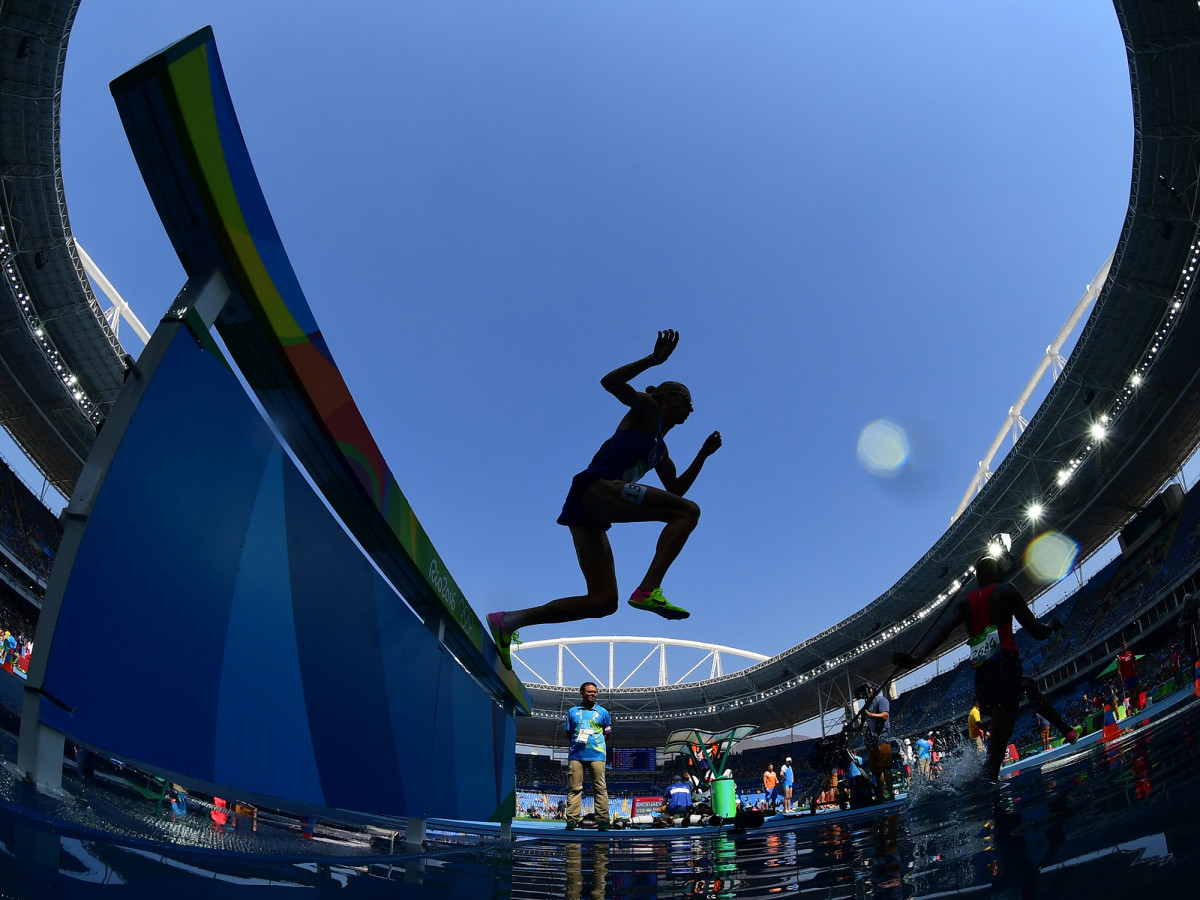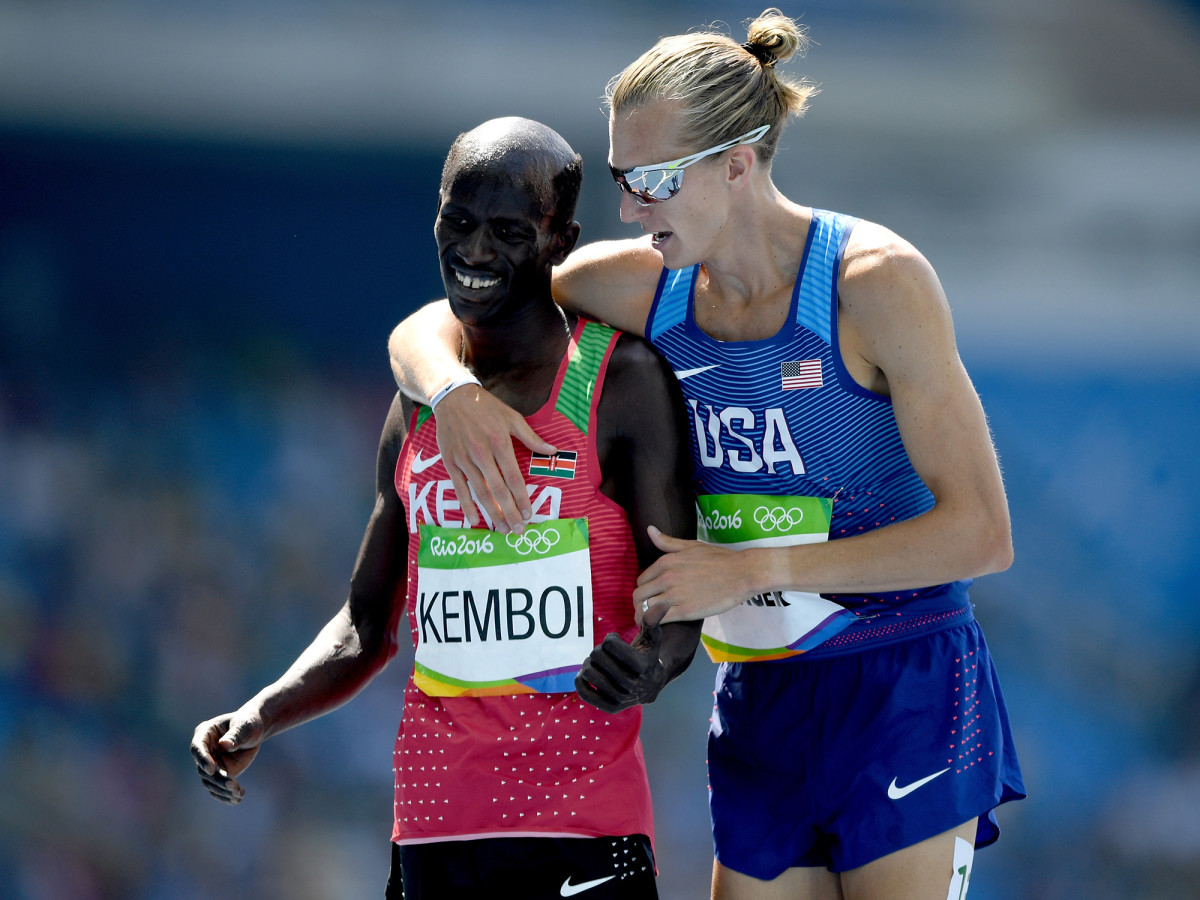U.S.'s Evan Jager clears another barrier in breaking Kenya's distance dominance

Special reporting by Chris Chavez
RIO DE JANEIRO – Late Wednesday morning, Vin Lananna, the head coach of the U.S. men’s Olympic track and field team, lingered outside the media mixed zone area before the start of the morning’s running events. Head coach of the Olympic team is a significant title, yet largely a ceremonial and bureaucratic position. But Lananna is a lifelong coach and more specifically, a lifelong distance running coach. He expressed satisfaction with the performance of the U.S. men’s team through five days of the Olympic meet and looked ahead to the 3,000-meter steeplechase, which was forthcoming. “We might see something good there,’’ said Lanana. “Something really good.’’
Ninety minutes later, Evan Jager, a willowy, 27-year-old Midwestern runner with soft blue eyes and a signature man bun split Kenyans Conseslus Kipruto and Ezekiel Kemboi (who was alter disqualified for stepping outside the track at the water jump) across the finish line to win a silver medal, the United States’ first steeplechase medal in 32 years. Jager circled the outside of the blue track on a victory lap, with an American flag draped across his shoulders. This is such a mandatory part of winning track medals that that USA Track and Field has a flag unit that supplies medalists. But in this case, the flag held extra symbolic power. “It’s very cool,’’ said Jager after the race. “I know the history of the sport, especially in the U.S.A.’’
U.S.’s Jenny Simpson won't let half-empty Rio stadium dull historic Olympic moment
There is no running event that better exemplifies the towering brilliance of Kenyan distance runners over the last four decades more than the steeplechase. From Amos Biwott’s victory in the thin air of Mexico City to a gold-bronze by Ezekiel Kemboi and Abel Mutai four years ago in London, Kenyan runners won 21 of 30 medals in the 10 Olympics Games in which they participated, and all 10 gold medals. (Kenya boycotted the 1976 and 1980 Olympics.) In 13 world championship meets from 1991, Kenya has won 11 gold medals and 28 of 39 overall medals, a prodigious tally of strength and depth.
Likewise, the steeplechase was, for many years, a glaring symbol of American distance running incompetence. The last U.S. medal at the Olympics had been Brian Diemer’s bronze at the 1984 Olympics in Los Angeles. In the last half-century, only Deimer, George Young (1960s) and Henry Marsh, who was ranked No. 1 in the world in the early 1980s, had been truly world-class steeplechasers. Mark Croghan, in the 1990s, and Daniel Lincoln, in the 2000s, were at the edges of world medals, but never earned one. The gap from Diemer was growing.

The U.S. gained on the world in other events. Through the 2000s, American middle and long-distance running experienced a renaissance that continues today. Meb Keflezighi (marathon), Deena Kastor (marathon), Shalane Flanagan (10,000 meters), Galen Rupp (10,000 meters) and Leo Manzano (1,500 meters) all won Olympic medals. Numerous other athletes medaled at the world championships. Here in Rio, Emma Coburn took a bronze medal in the women’s 3,000-meter steeplechase and Jenny Simpson a bronze in the women’s 1,500 meters, both American firsts. (Jager had supplied Coburn with a hair band before her race, which is likely, although unofficially, a first of some sort.)
But even with all of this, the steeplechase lagged. Jager changed that on a hot morning in a nearly empty stadium. This was not only because track and field events have been poorly attended in Rio, but because the unusual decision by the IAAF, track’s international governing body, to contest finals in the morning—a time slot usually reserved for preliminary rounds—has left some events marginalized. There was, however, nothing marginal about Jager’s performance.
How Pascal Dobert turned Evan Jager into America's top steeplechase runner
Jager had come to the steeplechase suddenly, after a solid 1,500- and 5,000-meter career in college at Wisconsin and as a professional runner. But in 2012, less than three months before the Olympics, he tried the steeplechase for the first time. In July, he ran 8:06.81 to break Lincoln’s American record. He finished only sixth in London, but continued to improve: fifth at the worlds in 2013 and, then last summer at a meet in Paris, he was poised to defeat all the Kenyans and become the first non-African runner to break eight minutes when he tripped over the last barrier.
He had earned the respect of the Kenyans. “He’s a good steeplechaser,’’ says Kemboi, the 34-year-old two-time Olympic gold medalist (2004 and ‘12). “He has endurance.’’
But that stumble stuck with him. He finished only sixth at the worlds and moped afterward. “I shut down a little after Beijing,’’ said Jager. “That result in Paris made me think I had to medal [in Beijing at the worlds]. I was just putting a lot of mental stress on myself and that negatively took a toll on me.’’
Jager’s steeplechase coach Pascal Dobert worked on his mentality. “Pascal told me, ‘On race day, you’re intense enough as it is.’ He told me I needed to enjoy the process and enjoy training.’’ Jager raced little this year, contesting only one steeple before the early July U.S. Olympic Trials, which he won easily. He came to Rio fit, rested and emotionally prepared. “I was so relaxed, it didn’t even feel like the Olympics to me,’’ said Jager after his race.

In the final, running in glaring, 90-degree sunshine, Kipruto took the lead quickly and ran the first 1,000 meters in a quick 2:41.64, stringing out the field. After only three laps, Kipruto, Jager and Kemboi had begun to separate from others. When Kipruto slowed the tempo slightly with four laps left, Jager jumped into the lead, but held steady. No surging. “I was thinking, even though you’re in first, don’t press,’’ said Jager. “Just relax. Don’t try to break them, because they’re really strong.’’
At the bell lap, Kipruto eased past Jager and then shot free down the backstretch. Kemboi also went by, but it was far back to fourth place. The medals were decided. Again, Jager did not panic, holding back and then passing Kemboi in the stretch. There is genuine respect among the three runners: Both Kenyans embraced Jager. And Jager consoled Kemboi, although only for the third-place finish and not for the DQ that would come later. “I told him I was proud of him,’’ said Jager. “He’s the greatest steeplechaser of all time.’’
Kenya’s Faith Kipyegon takes 1500m gold in upset win at Rio Olympics
The gravity of his own accomplishment took hold slowly. “I know how dominant Kenya has been for the last 20 or 30 years,’’ said Jager. “I know how big an achievement this is. I don’t know if it’s hit yet.’’
When it does hit, it will land resoundingly in the record books, a line of history that moves U.S. distance running further from their frustrations of more than a decade ago. It was one of the last frontiers, now conquered.
